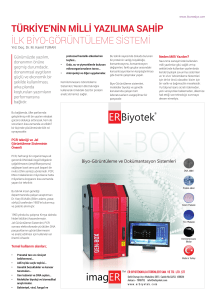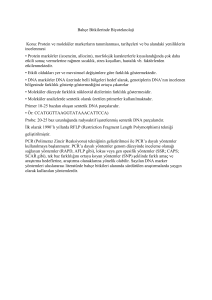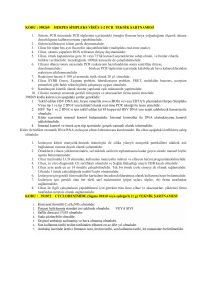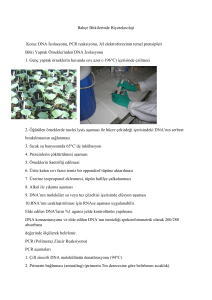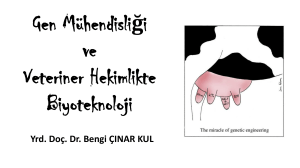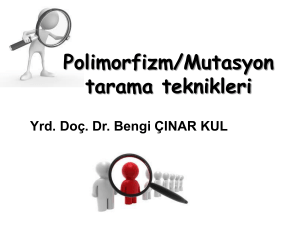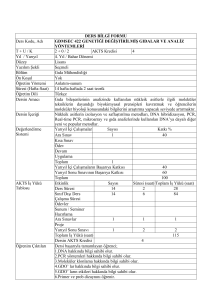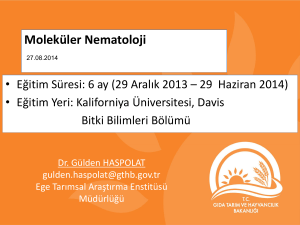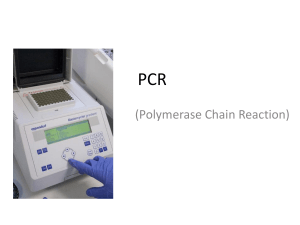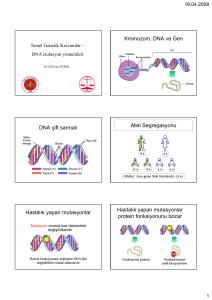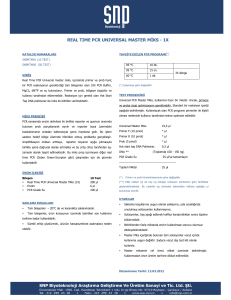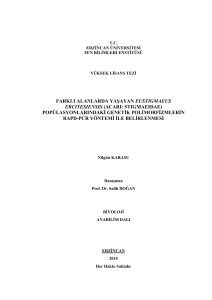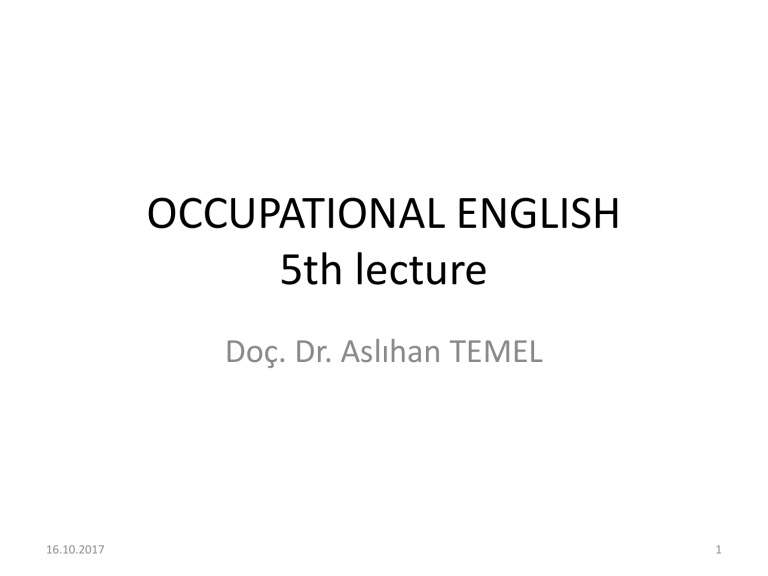
OCCUPATIONAL ENGLISH
5th lecture
Doç. Dr. Aslıhan TEMEL
16.10.2017
1
How to write a review 1
• Synthesis of best (and recent) but not all
resources (articles, data, presentations)
• Number of projects (articles, data) are
increasing
• A person with knowledge and experience in
the field should summarize findings
• A student at the beginning of his/her career
and project
16.10.2017
2
How to write a review 2
• Interesting (history of sequencing) or urgent
(Ebola, Zika virus and treatment) topic
• Audience (experts, undergrad/grad student,
public)
16.10.2017
3
How to write a review 3
• Use several database e.g. Google Scholar, Web
of Science
• Track database search, do not repeat
• Recent reviews
• Different view
• Take notes from each article
• Construct a plan
• Do not forget old but essential resources
16.10.2017
4
How to write a review 4
•
•
•
•
•
•
First learn the topic
Write an abstract/summary
Introduction; explanation of the topic
Importance of the review
Divide the topic under headings
Briefly explain the headings by comparing
previous articles
• Conclusion
16.10.2017
5
• Epigenetic Regulation in Plants
• Epigenetic Control of Gene Expression
– DNA methylation
– Histone modifications; Histone methylation, Histone
acetylation
– Chromatin Structure; SWI/SNF-ATPases, ISWI-ATPases, CHDATPases, INO80 family
• Epigenetic Regulation of Plant Growth and Development
– Seed development
– Flowering; Noncoding RNAs in flowering, Histone modifications
during vernalisation, Chromatin structure at FLC, Senescence
• Perspectives
• References
16.10.2017
6
16.10.2017
7
• 1. Each tail should be in a clean eppendorf tube.
• 2. Add 500µl of tail lysis buffer containing Proteinase K (PK) to
each tube.
• 3. Incubate tail samples in 50-60C water bath overnight.
• 4. Add 250µl saturated (6M) NaCl to each tube.
• 5. Shake tubes vigorously (~ 20 times) and incubate tubes on ice
for 10 minutes.
• 6. Spin tubes on low speed (#6 on Hemle centrifuge) at 4C for 10
minutes.
• 7. Remove supernatant and place into a clean eppendorf.
• 8. Add 650µl isopropanol and invert to mix. Incubate tubes at
room temperature for 15 minutes.
• 9. recover DNA by centrifuging, max speed, 10 minutes at room
temp.
• 10. Place tubes inverted on bench and allow to air dry 5 minutes.
• 11. Add 200µl of TE pH 7.5 or sterile water to each tube. Incubate
in 50-60C water bath for * 10 minutes. Resuspend pellet by
pipetting up and down several times.
16.10.2017
8
•
•
•
•
•
•
•
•
•
•
•
Her kuyruk, temiz bir Eppi tüpte olmalı
Her tüpe, PK içeren 500 µl kuyruk lizis tampı-onu ekle.
Kuyruk örneklerini, 50-60°C su banyosunda geceboyu beklet.
Her tüpe, 250 µl doymuş NaCl ekle.
Tüpleri, kuvvetli biçimde (yaklaşık 20 defa) salla ve buzda 10 dakika
beklet.
Tüpleri düşük hızda (hemle santrifüj 6), 4°C’de 10 dakika boyunca
santrifüj et.
Üst sıvıyı al ve yeni bir tüpe aktar.
650 µl izopropanol ekle ve karıştırmak için tersyüz et. Tüpleri oda
sıcaklığında 15 dakika beklet.
DNAyı geri kazanmak için maksimum hızda, oda sıcaklığında 10
dakika santrifüj et.
Tüpleri ters biçimde tezgahın üzerine yerleştir ve 5 dakika süreyle
kurumaya bırak
Her tüpe, 200 µl TE (pH 7.5) veya steril su ekle. Su banyosunda 10
dakika beklet. Çökeltiyi, birkaç kere pipetleme yaparak çöz.
16.10.2017
9
Anemopsis californica is a perennial herbaceous plant that has
been utilized as a medicinal plant for the treatment of various
diseases. The present work was carried out with the objective of
optimizing a method of extraction of the genomic DNA of A.
californica and a PCR protocol and later to evaluate the existing
genetic diversity among the genotypes deriving from different
origins. For DNA extraction, we tested four procedures: with the
CTA B-2 protocol, we obtained the highest yield and the best
quality. To estimate genetic variability, we utilized the randomly
amplified polymorphism DNA (RAPD) technique, employing 20
oligonucleotides, of which only 18 generated reproducible
banding patterns, producing 123 polymorphic bands generated,
thus obtaining a polymorphism rate of 93.93% among the
genotypes analyzed.
16.10.2017
10
A.c., pek ok hastalığın tedavisinde tedavi edici bitki olarak
kullanılan, çok yıllık otsu bir bitkidir. Bu çalışma, A.c. den gDNA
ekstraksiyon yöntemini ve PCR protokolünü optimize etme ve
daha sonra farklı kökenlerden gelen genotiplerdeki genetik
çeşitliliği değerlendirmek amacıyla gerçekleştirildi. DNA
ekstraksiyonu için 4 farklı yöntem denedik, en yüksek verimi ve
en iyi kaliteyi CTAB-2 yöntemi ile elde ettik. Genetik çeşitliliği
tahmin etmek için, 18 tanesi tekrarlanabilir bantlar veren ve 123
polimorfik bant oluşturan ve genotipler arasında %93.93
polimorfizm oranı veren 10 oligonukleotid ile RAPD yöntemini
kullandık.
16.10.2017
11
Higher plants are sessile therefore are continuously exposed to
different environmental stress factors, such as drought, salinity,
heavy metals, nutritional disorders, radiation. Most of these
stresses produce certain common effects on plants, like induced
oxidative stress by overproduction of reactive oxygen species
(ROS), besides their own specific effects. Thus, plants have
developed their own specific response(s) against each of these
stresses as well as cross-stress response(s). Investigating these
responses is difficult under field conditions, but plant tissue
culture techniques are performed under aseptic and controlled
environmental conditions.
16.10.2017
12
Yüksek yapılı bitkiler hareketsizdir ve bu yüzden kuraklık,
tuzluluk, ağır metal, beslenme bozuklukları ve radyasyon gibi
çevresel stres faktörlerine sürekli olarak maruz kalırlar. Bu
streslerin çoğu, kendilerine özgü etkilerinin yanısıra, reaktif
oksijen türlerinin aşırı üretimi ile indüklenmiş oksidatif stres gibi
bazı yaygın etkiler oluştururlar. Bu yüzden, bitkiler bu streslerin
her birine özgün yanıtlar ve ayrıca çapraz stres yanıtları
geliştirmiştir. Bu yanıtların tarla koşullarında araştırılması zordur
ancak bitki doku kültürü teknikleri aseptik ve kontrollü çevre
koşullarında gerçekleştirilir.
16.10.2017
13
M 1 2 3 M
M 1 2 3 4 5 6 7 8 9
1000 bp
1) RAPD, 3
genotypes,
polymorphism
16.10.2017
2) RAPD, 9
genotypes,
polymorphism
14
1) This image shows RAPD analysis of 3 genotypes. 2 out of 13
bands were polymorphic. A band around 1300 bp was more
visible in genotypes 2 and 3. 1200 bp-long another band was
present only in genotype 1.
2) This is an agarose gel representing RAPD results of 9
genotypes. All genotypes gave 4 monomorphic bands. No
polymorphism was detected.
16.10.2017
15
Reverse transcription followed by quantitative polymerase
chain reaction analysis, or qRT-PCR, is an extremely
sensitive, cost-effective method for quantifying gene
transcripts from plant cells. The availability of nonspecific
double-stranded DNA (dsDNA) binding fluorophors, such as
SYBR Green, and 384-well-plate real-time PCR machines
that can measure fluorescence at the end of each PCR cycle
make it possible to perform qRT-PCR on hundreds of genes
or treatments in parallel.
16.10.2017
16
Revers transkripsiyon ve takip eden kantitatif PCR analizi
veya qRT-PCR, bitki hücrelerindeki gen transkriptlerininin
miktarını belirlemek için aşırı duyarlı ve uygun maliyetli bir
yöntemdir. SYBR green gibi, spesifik olmayan iki iplikli
DNA’ya bağlanan floroforların ve her PCR döngüsünün
sonunda floresanı ölçebilen, 384 kuyulu plate real time PCR
cihazlarının varlığı, qRT-PCR’ın yüzlerce gen veya uygulama
için paralel olarak gerçekleştirilmesini mümkün kılar.
16.10.2017
17

